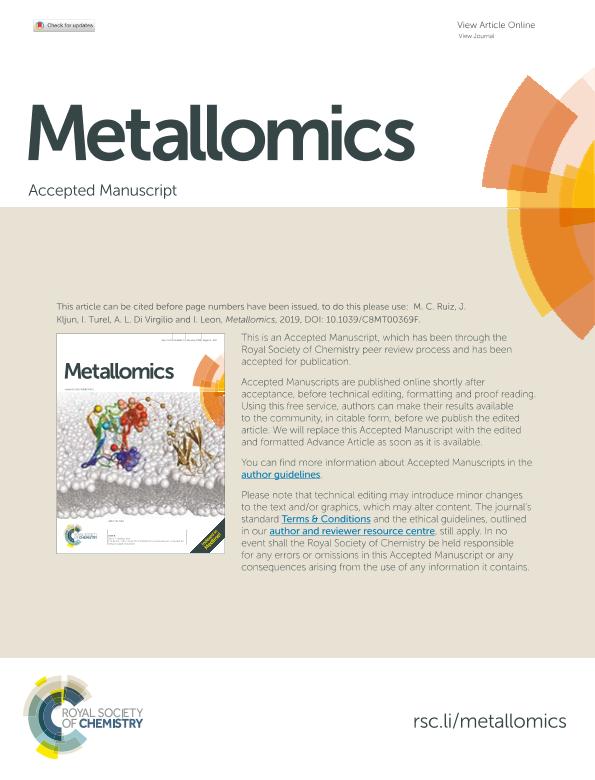Artículo
Comparative antitumor studies of organoruthenium complexes with 8-hydroxyquinolines on 2D and 3D cell models of bone, lung and breast cancer
Fecha de publicación:
03/2019
Editorial:
Royal Society of Chemistry
Revista:
Metallomics
ISSN:
1756-5901
Idioma:
Inglés
Tipo de recurso:
Artículo publicado
Clasificación temática:
Resumen
The purpose of this work was to screen the antitumor actions of two metal organoruthenium-8-hydroxyquinolinato (Ru-hq) complexes to find a potential novel agent for bone, lung and breast chemotherapies. We showed that ruthenium compounds (1 and 2) impaired the cell viability of human bone (MG-63), lung (A549) and breast (MCF7) cancer cells with greater selectivity and specificity than cisplatin. Besides, complexes 1 and 2 decreased proliferation, migration and invasion on cell monolayers at lower concentrations (2.5-10 μM). In addition, both compounds induced genotoxicity revealed by the micronucleus test, which led to G 2 /M cell cycle arrest and induced the tumor cells to undergo apoptosis. On the other hand, in multicellular 3D models (multicellular spheroids; MCS), 1 and 2 overcame CDDP presenting lower IC 50 values only in MCS of lung origin. Moreover, 1 outperformed 2 in MCS of bone and breast origin. Finally, our findings revealed that both compounds inhibited the cell invasion of multicellular spheroids, showing that complex 1 exhibited the most important antimetastatic action. Taken together, these results indicate that compound 1 is an interesting candidate to be tested on in vivo models as a novel strategy for anticancer therapy.
Palabras clave:
CANCER
,
RUTHENIUM
,
SPHEROIDS
,
ANTITUMOR
Archivos asociados
Licencia
Identificadores
Colecciones
Articulos(CEQUINOR)
Articulos de CENTRO DE QUIMICA INORGANICA "DR. PEDRO J. AYMONINO"
Articulos de CENTRO DE QUIMICA INORGANICA "DR. PEDRO J. AYMONINO"
Citación
Ruiz, Maria C.; Kljun, Jakob; Turel, Iztok; Di Virgilio, Ana Laura; Leon, Ignacio Esteban; Comparative antitumor studies of organoruthenium complexes with 8-hydroxyquinolines on 2D and 3D cell models of bone, lung and breast cancer; Royal Society of Chemistry; Metallomics; 11; 3; 3-2019; 666-675
Compartir
Altmétricas




